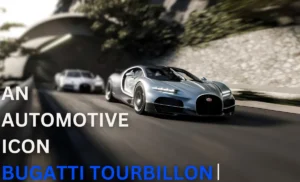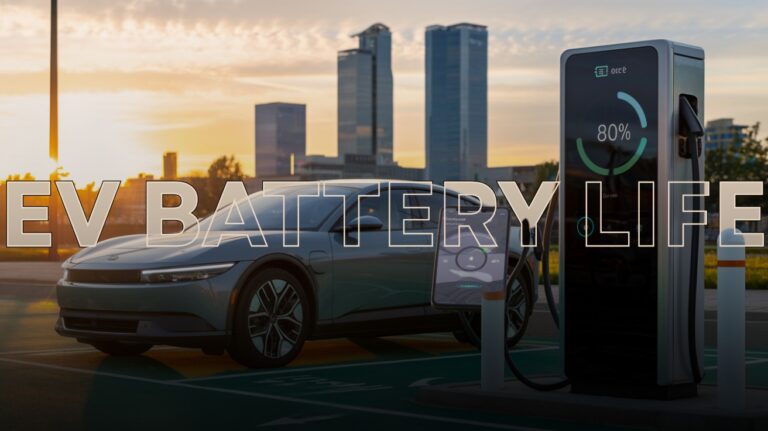Bugatti has embarked on a new era by introducing the Tourbillon hyper-GT, a successor to the iconic Chiron. This groundbreaking model features a striking new design, and a revolutionary hybridized V16 engine, and aims to become the world’s fastest road car. Named after a mechanism in high-end watches that ensures accuracy, the Tourbillon arrived 20 years after the launch of the Veyron, which set new standards for power and performance in road cars.
In this article
Key Highlights
- Price: Starting at approximately ~ Rs 34 crore (3.8 million euros)
- Engine: 8.3-litre naturally aspirated V16 producing 1,000hp
- Weight: 1,995kg, lighter than the Chiron
- Production: Limited to 250 units
- Starting Price: GBP 3.2 million (about Rs 34 crore, excluding duties)
A Legacy of Innovation
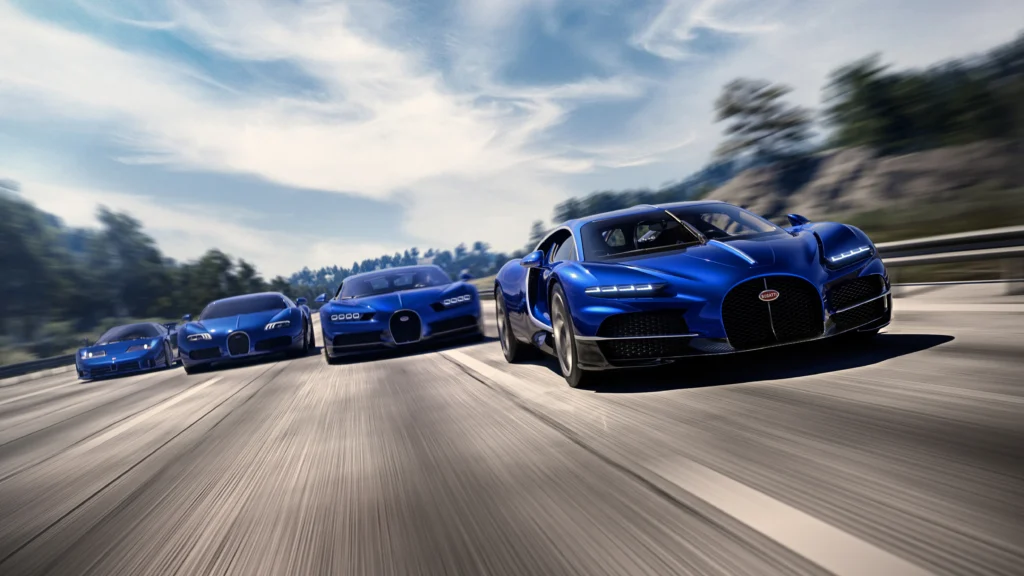
Mate Rimac, CEO of Bugatti, describes the Tourbillon as “art on wheels, a moving painting,” continuing the legacy of “bending physics.” Despite its exclusivity and high price, Rimac acknowledges the wide-reaching influence of the Bugatti brand. “We will not change the life of everybody, but everyone can be inspired,” he notes, highlighting the aspirational nature of Bugatti’s creations.
When Rimac acquired Bugatti in 2021, the brand initially developed an electric coupe SUV. Rimac quickly redirected this vision, emphasizing the need for a model that embodies emotional and special qualities. “If it is comparable, it is no longer Bugatti,” he insisted, echoing the sentiments of Ettore Bugatti, the company’s founder.
Powertrain and Performance
The Tourbillon signifies a dramatic shift in Bugatti’s approach to powertrains. It replaces the formidable quad-turbo W16 engine, which powered the Chiron and Veyron, with a 1,800hp plug-in hybrid setup. This setup centers around a naturally aspirated V16 engine, a rarity in modern automotive engineering.
Bugatti Tourbillon Engine
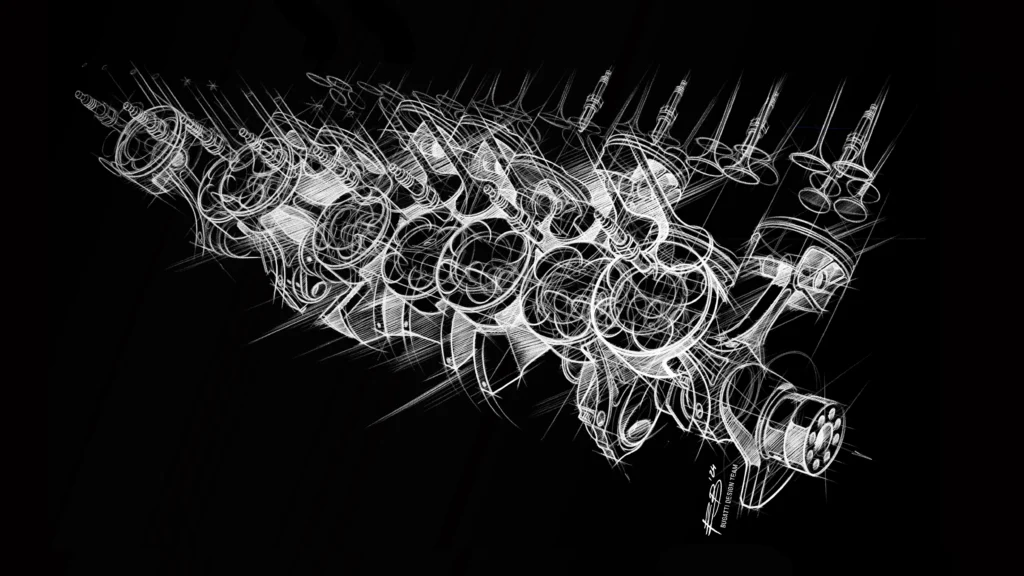
This engine, developed in collaboration with Cosworth, is only the second of its kind to power a road car since the 1991 Cizeta-Moroder V16T. It produces 1,000hp on its own, making it one of the most potent combustion engines in a road-going car. The addition of three Rimac-supplied electric motors (two on the front axle and one at the rear) brings an additional 800hp, culminating in a total output of 1,800hp. This makes the Tourbillon the most powerful combustion car available.
Electrification Strategy
The Tourbillon’s 25kWh battery, unusually large for a plug-in hybrid, provides an electric range of over 60km. It also features 800V charging hardware, enabling a 0-80% charge in just 12 minutes. This setup prioritizes throttle response and torque fill during gear changes, enhancing the driving experience. The Tourbillon is set to break records with a quoted preliminary top speed of 445kph and a 0-100kph time of 2.0 seconds. “Let’s say this is not the maximum,” Rimac hinted, suggesting even greater performance potential.
Design and Aerodynamics
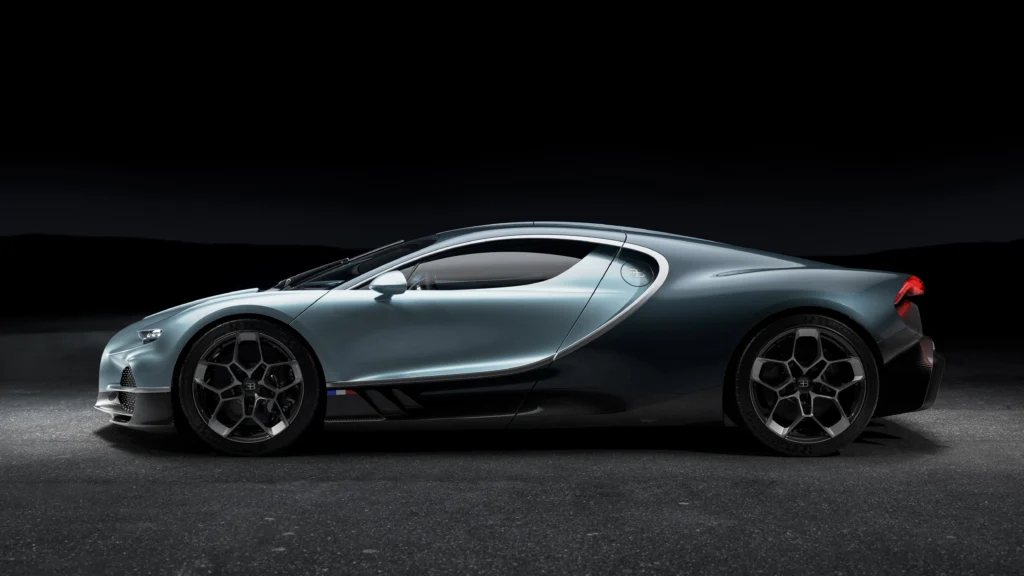
The design of the Tourbillon is a testament to Bugatti’s commitment to blending aesthetic appeal with functional engineering. While the design carries forward elements from the Chiron and Veyron, it is heavily influenced by the new powertrain and the car’s performance goals.
Exterior Design
The ‘C-line’—a hallmark feature of Bugatti’s W16 cars inspired by early Bugatti models—is retained. The iconic horseshoe grille, central dividing line along the bonnet and roof, and two-tone paintwork also continue. However, the Tourbillon’s silhouette is distinctly shaped by its new powertrain and its aerodynamic needs.
Bugatti states, “The ability to travel at more than 400kph requires every single surface, inlet, and ridge to be finely honed to ensure it is not only aerodynamic but also beneficial to the car’s thermodynamics.” This includes features like a rear wing that remains submerged even at top speeds, maintaining aerodynamic efficiency, and a massive rear diffuser that optimizes airflow.
Aerodynamic Innovations
The Tourbillon features a new rear wing concept that provides higher downforce at slower speeds and acts as an airbrake for improved stability during deceleration. The diffuser starts behind the passenger cabin, rising at an ideal angle to maintain balance, integrating seamlessly with the car’s structure to improve aerodynamic efficiency without compromising aesthetics.
Elegant Yet Functional
Despite its high performance, the Tourbillon maintains an understated elegance. Designer Frank Heyl emphasized that Bugatti’s hypercars are designed to be remembered, not to shout for attention. The Tourbillon’s design reflects this philosophy, with a subtle yet striking presence that ensures it stands out without being ostentatious.
Interior Highlights
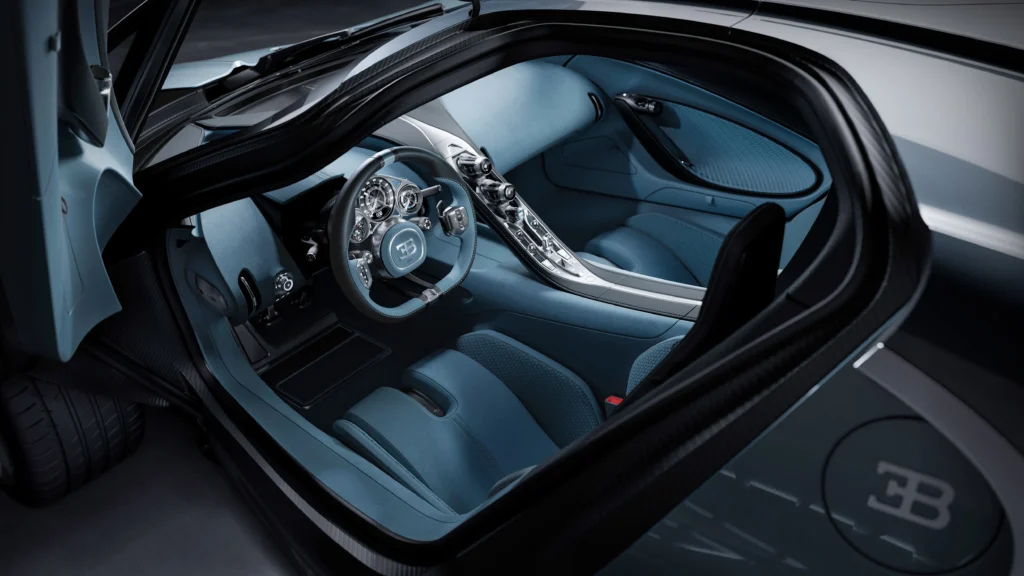
The Tourbillon’s interior focuses on timelessness, featuring visible internal mechanisms and physical controls. This approach ensures that the car remains appealing and functional for decades, avoiding the rapid obsolescence of digital technologies.
Instrument Cluster
At the heart of the interior is an instrument cluster designed and built by Swiss watchmakers. Comprising over 600 components and constructed from precious materials like titanium, sapphire, and ruby, it is engineered to a tolerance of just 50 microns. The cluster is fixed in place, with the steering wheel rotating around it, ensuring the gauges are always visible.
Center Console and Controls
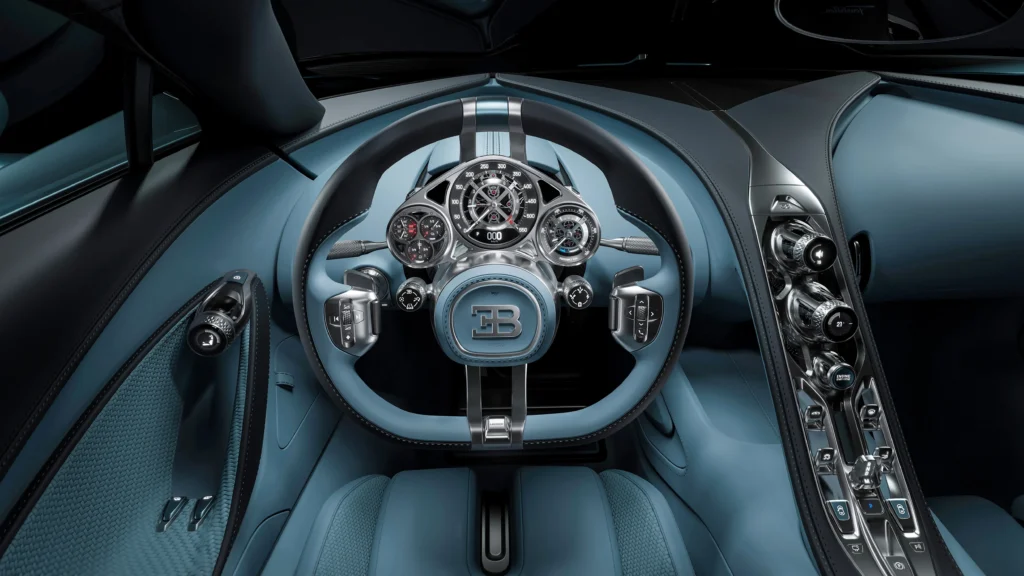
The center console blends crystal glass and aluminum, showcasing the intricate workings of the switches and the engine start lever. The glass is developed over 13 stages to ensure clarity and strength, while the aluminum parts are milled from single blocks of metal. A hidden touchscreen provides modern functionality, deploying only when needed.
Engineering Excellence
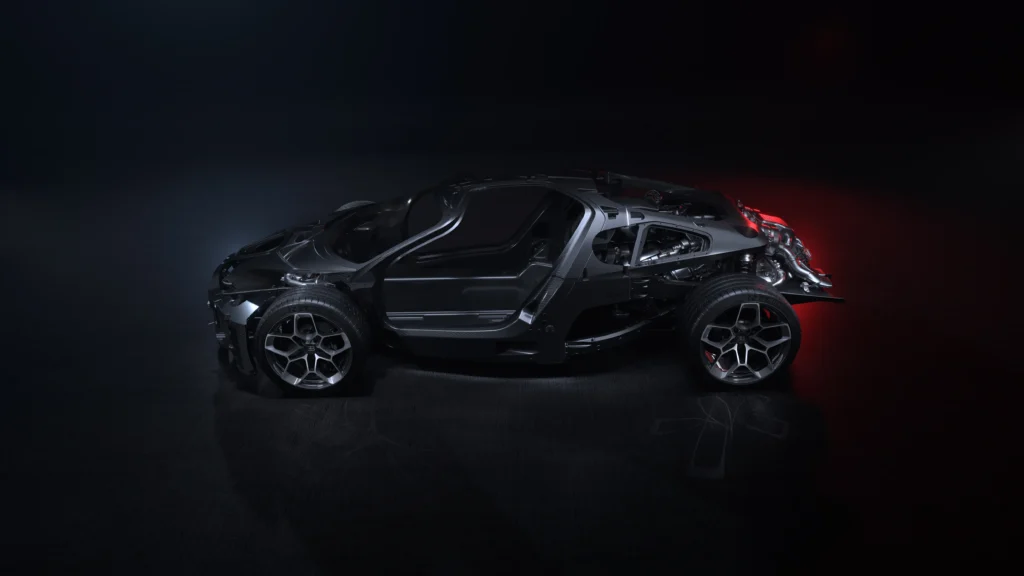
The Tourbillon features an entirely new chassis and body structure, utilizing next-generation T800 carbon composite and innovative weight-saving techniques. The battery is integrated as a structural component of the monocoque, and the rear diffuser includes a crash concept inspired by top-level motorsport.
Advanced Suspension and Braking
The new chassis incorporates multi-link suspension forged from aluminum, replacing the Chiron’s double wishbone steel construction. This results in a 45% reduction in suspension weight. The brakes use advanced carboceramic technology and a bespoke brake-by-wire system for superior performance.
Lightweight and Powerful
Despite adding a hybrid powertrain, the Tourbillon weighs less than the Chiron, a feat achieved through advanced materials and engineering. The car’s lightweight construction, combined with the immediate torque from the electric motors, ensures extraordinary performance.
Looking Ahead
Set for delivery in 2026, the Tourbillon is expected to redefine hypercar performance and luxury. With only 250 units to be produced, each hand-assembled at the Bugatti Atelier in Molsheim, the Tourbillon is poised to become an automotive icon.
Conclusion
The Bugatti Tourbillon is not just a car; it is a masterpiece of engineering, design, and performance. By blending cutting-edge technology with timeless design principles, Bugatti has created a vehicle that stands out in the automotive world. As the brand continues to push the boundaries of what is possible, the Tourbillon is a testament to Bugatti’s unwavering commitment to excellence and innovation.
Also, Read:

